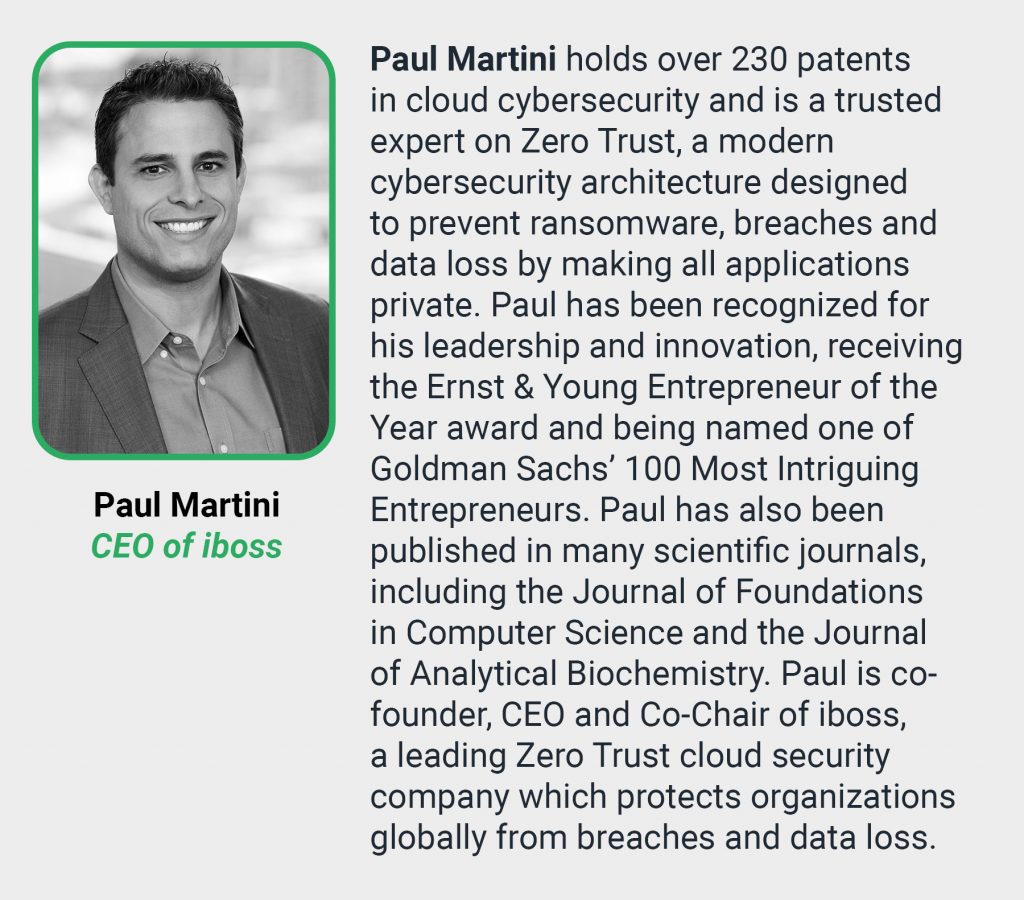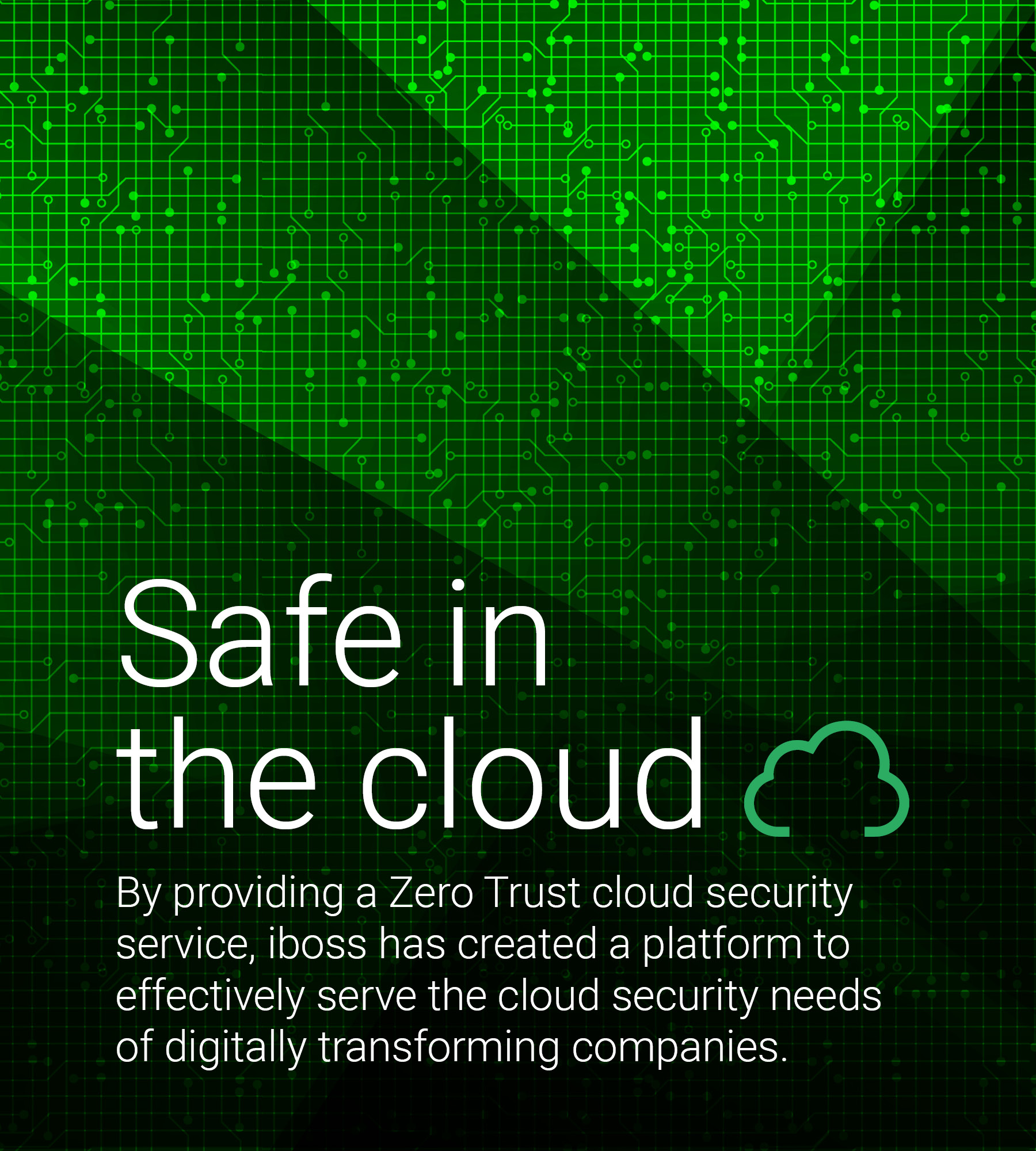Language
You can read the magazine in one of the following languages
During the California Gold Rush, mining camps were often so remote that they could only be reached by mule or wagon, which quickly become moving targets for unruly bandits. Much has changed since then, but the dangers of those dusty days of the Wild West remain – only now, it’s all taking place in a digital realm with ransomware, breaches and data loss being the main concerns for companies which are increasingly reliant on technology.
But the tech landscape never stands still, with the digital revolution gathering dizzying force, particularly during the pandemic years as companies wholeheartedly committed to their digital transformations. With that growth came additional security challenges and the advent of exciting innovations such as the cloud.
“If you look at the number of breaches in the last two or three years, it’s exponential. The new war is digital, it’s cyber warfare,” says Paul Martini, CEO of iboss. Indeed, according to Statista, the global average cost of a data breach amounted to US$4.24 million in 2021 – a substantial increase on the US$3.86 million of the previous year.

The vast majority of breaches occur due to unauthorized access to vulnerable applications and services. CISA, the Cybersecurity and Infrastructure Security Agency of the US Federal Government, in conjunction with Australia and the United Kingdom observed an increase in high-impact ransom incidents in 2021. The technical reasons for these breaches was a result of an attacker gaining access to networks with two of the top three initial infection vectors being exploitation of software weaknesses and vulnerabilities.
The iboss Zero Trust service aims to stop breaches and data loss by focusing on the root cause by preventing attackers from gaining access to applications, data and services to begin with. It does this by providing a “private door” to all applications an organization uses and only allowing approved users access to those resources. In this way, even if a new vulnerability emerges, attackers have no way to breach the organization because they have no access to the vulnerable application to begin with.
The idea of a Zero Trust Edge allows an organization to make all applications private and only accessible by approved employees. With applications now scattered throughout the cloud and company data centers, having a global iboss Zero Trust service means that all of the applications are completely protected. The added benefit is that users are also connected to the same Zero Trust service, which means they can access those protected applications from anywhere, without needing to be in the office. The iboss Zero Trust service handles connecting the user automatically without the need for legacy VPNs.
“As humans, we’re so used to protecting things by putting something physical around it,” Paul reflects. “We’re not used to a situation where you’re protecting things you can’t even see – like applications and data that live in the cloud.” The iboss Zero Trust Edge turns the legacy security model on its head by delivering the security in the cloud and providing protection at the point that the application lives.
To address these rising threats, iboss has implemented the Zero Trust model of security, which requires continuous verification and authorization for each and every request to a protected enterprise application. If at any time the service detects a compromised laptop trying to access a protected resource, it terminates the connection. Attackers have no access to protected applications and data, which prevents breaches and data loss.
“It’s essentially the SaaS-ification of cloud cybersecurity and how things connect,” Paul explains. “Zero Trust and what we’re doing with cloud security and connectivity is changing the way we deliver cybersecurity. It’s available and protecting all data and applications regardless of where they sit, regardless of where they’re at.”
Even with the worst of the pandemic hopefully behind us, Paul sees the need for iboss’s platform continuing to snowball as the world of work pivots to a hybrid model and as applications continue to move to the cloud at an accelerated rate, lured by its ease of use and lower costs. “What we are doing is trying to reduce cyber risks from ransomware, breaches and data loss – it’s the number one issue right now,” he stresses.

Indeed, iboss’s customers have already reaped substantial benefits from leveraging its platform. These range from the more obvious reduction of cybersecurity risks, to enhanced performance and cost effectiveness. Rather than fighting fires, IT personnel are freed up to optimize business processes, driving companies forward into this digital era.
Paul likens iboss’s mission to that of an airport checkpoint but on a much larger scale. “We deal with 150 billion transactions every day for application and data access. The iboss Zero Trust service makes the decision of whether that access is from an attacker or from a trusted worker. The scale is so much bigger and so instantaneous that we have to do the same thing the checkpoint does but at lightning speed and accuracy,” he says.
“At iboss, we put everything in a bubble – every single company-owned application, data and service is in a bubble. The resources can be anywhere, but you have to come through us to access it. We can authorize or deny access, but we deny by default. If you don’t have a boarding ticket, we’re not even going to bother letting you through.”


